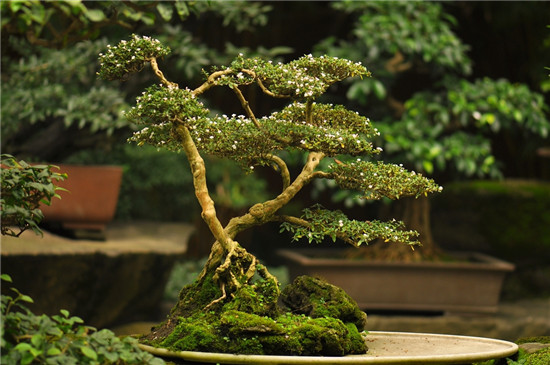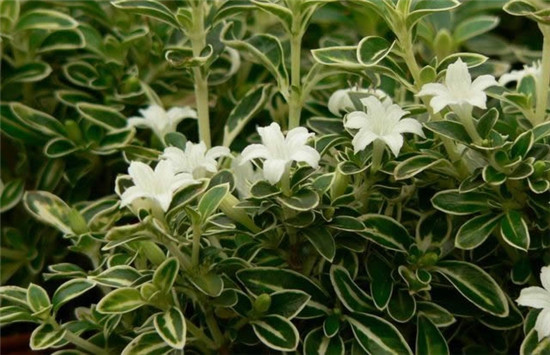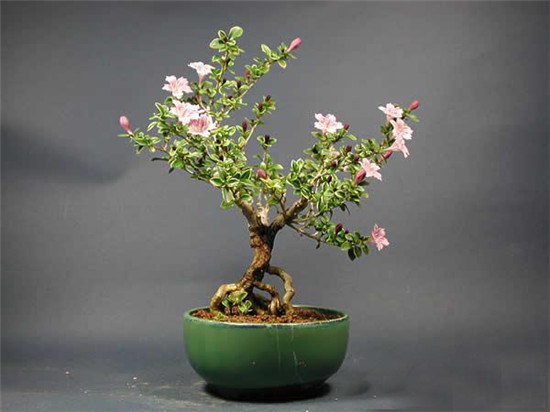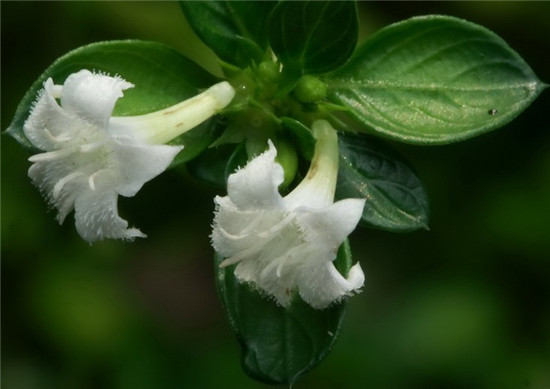[how to raise snow in June] how to plant snow in June
June snow gets its name from the fact that it blossoms in June, like snowflakes wrapped in silver on branches. Next, let's take a look at how to grow June snow.

June snow is by far the most popular bonsai tree sold in Europe and the United States. It makes a beautiful bonsai with very small dark green leaves, beautiful textured bark, trunks and even young trees. It can grow in woods and wet areas. The small oval leaves of June snow earthworms are slightly larger than those of June snow japonica rice. The small white flowers that may erupt give it the nickname "Millennium Star" June Snow several times a year. In addition, it grows naturally on the tree trunk, giving them the ideal appearance age of the surface root, an interesting bark pattern.
A cold wind that is bright but not permanently sunlit, such as an east or west windowsill. Good humidity levels must be maintained and daily spray and humidity trays can be provided. Do not place trees in the dry air above the windowsill radiator from these plants that significantly reduce the humidity around. In summer, when the night temperature is higher than 7 ℃. Snow in June will benefit from a few weeks of outdoor activities.
Snow in June, evergreen shrubs, blooming in June, like snow in June, elegant and lovely, hence the name.
Most of them are wild in the mountains and forests and by the rocky banks of streams. For subtropical tree species, sexual preference for warm and humid climatic conditions and semi-overcast and semi-Yang, loose and fertile soil, good drainage soil, neutral and slightly acidic, cold resistance is not strong.

The culture method of June snow
[growth habits] sexual like sunshine, but also more resistant to shade, avoid strong winds and scorching sun, shade should be sparse in hot and hot season, fine white flowers bloom in June, the tree is the smallest with sparse branches and leaves, and there is a lot of escape; like light shade, afraid of the sun, there are many under the leaves of deep mountains; lax temperature requirements, evergreen in South China, semi-evergreen in Southwest; strong drought tolerance, lax requirements on soil Pot culture should use humus, loose and fertile, strong permeability of slightly acidic, moist culture soil, good growth.
[cuttage propagation] dormant branches are planted from February to March, and semi-mature branches are inserted from June to July. Hard branches are usually used in early spring, but both hard branches and old branches can be used in the rainy season. They all need to build a shed for shade. After planting, pay attention to watering, keep the seedling bed moist and easily survive. When making miniature or miniature bonsai, in order to promote it to take shape as soon as possible, in June-July plum rain season, take graceful perennial branches with big trees, cut the lower incision into horseshoe shape, insert it into stone or sand, keep warm by covering film, pay attention to spraying water, take root in about 40 days, transplant it at this time, and form it with a little binding and pruning.

[interpolation method] make use of the green open space to dig the soil loose, beat the soil mass fine and level it out. Spread the branches of the first to second sections (about three square meters) evenly on the ground prepared in advance, step on or press the topsoil with things, and pour water thoroughly. After that, spray water once every other day, and begin to take root and sprout branches ten days later. The first dilute liquid fertilizer was applied after 25 days. At 50 days, the seedlings were raised by applying 1000 times urea at a time. It can be transplanted and planted in two months. It can be cultivated in pot in four months, and can be planted for the first time at the same time.
[maintenance points] when hot and dry in summer, in addition to watering every day, sprinkle the foliage and nearby ground with clear water in the morning and evening to cool down and increase air humidity. The plant should be placed under the shade and should not be exposed to strong sunlight for a long time. After entering autumn, as the temperature drops, the amount of water should be controlled gradually and watered once every 2 to 3 days. In winter, move to a cold room or room with no less than 0 ℃ to overwinter, watering once every 20 to 30 days; if the room temperature is above 15 ℃, evergreen leaves will not fall, water should be watered once every 7 to 10 days, keep moist air and give sunshine. Do not be frozen during the severe cold, otherwise it is easy to die.

[turning the basin in pruning] turn the basin once every 1-2 years, in spring from February to March or late autumn, remove all the old soil and trim the roots properly. It can be combined with turning the basin to lift the root to make it form a hanging root and improve the ornamental value. From semi-deciduous leaves to the Beginning of Spring sprouting, pruning and pruning once every year from semi-deciduous leaves to sprouting, pruning long and overgrown branches, thinning dense thin and weak branches, cutting off branches of diseases and insect pests and other messy branches that affect ornamentation, and timely coring, sprouting and branching are carried out during the growing period to keep them in a beautiful shape. The cut healthy branches can be used for cuttings and propagation.
The above is the whole content of how to plant snow in June for you. I hope this article can help you. Please continue to follow us.
The cut healthy branches can be used for cuttings and propagation.
The above is the whole content of how to plant snow in June for you. I hope this article can help you. Please continue to follow us.
Related
- Wuhan Hospital Iron Tree Blooming Result Was Instantly Frightened by the Gardener Master
- Which variety of camellia is the most fragrant and best? Which one do you like best?
- What is the small blue coat, the breeding methods and matters needing attention of the succulent plant
- Dormancy time and maintenance management of succulent plants during dormancy
- Minas succulent how to raise, Minas succulent plant pictures
- What are the varieties of winter succulent plants
- How to raise succulent plants in twelve rolls? let's take a look at some experience of breeding twelve rolls.
- Attention should be paid to water control for succulent plants during dormant period (winter and summer)
- Watering experience of twelve rolls of succulent plants
- Techniques for fertilizing succulent plants. An article will let you know how to fertilize succulent plants.



